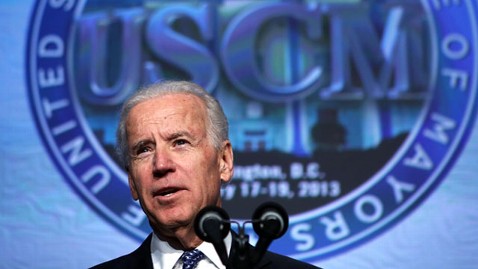Updated at 6:41 p.m. ET
An American in the Algerian hostage standoff in the Algerian desert has been killed, CBS News has learned.
Fredrick Buttaccio from Katy, Texas near Houston, was an employee of the oil company BP. It is unknown how he died, but U.S. government sources tell CBS News his body has been recovered and his family has been notified.
Who are the terrorists that Islamic militants want freed?
Meanwhile, a U.S. military plane has landed in Amenas, Algeria to pick up nine passengers - one American and eight foreign nationals - to be transported to Landstuhl, Germany, a military source told CBS News.
The flight, which contains an air medical evacuation team, was expected to have departed Algeria by Thursday afternoon.
It's not clear exactly how many total casualties have resulted from the fighting, but Algeria's state news agency reported that 12 foreign and Algerian workers had died since the start of the operation, citing an unidentified security source. That information could not be independently confirmed.
As CBS News correspondent Mark Phillips reported, the freed hostages told of how they fled in the confusion as the Algerian army attacked. Many were injured, some badly. One person said: "It happened so fast."
But it hasn't ended quickly, reported Phillips. The Algerians say they've freed nearly a hundred foreigners. And as they were being bused away, many thanked their rescuers. "They kept us all nice and safe and fought off the bad guys," said another person.
Also, more detail of the ordeal has emerged with the freed hostages. Some say they had explosives hung around their necks as they were placed in a convoy of vehicles by their captors. When the cars began to move, the Algerian Army units surrounding the site feared the captives were being taken out of the compound -- and opened fire.
The al Qaeda-linked Masked Battalio, led from afar by Moktar Belmoktar, may still be holding some of the roughly 30 foreigners still unaccounted for.
U.S. Secretary of State Hillary Clinton did not get into specifics on the crisis Friday afternoon, but described it as an "extremely difficult and dangerous situation" and called on the Algerian government to "preserve innocent life" in their efforts to fully resolve the crisis. Clinton spoke after the State Department said that Americans were still being held hostage.
The desert siege erupted Wednesday when the militants attempted to hijack two buses at the plant, were repulsed, and then seized the sprawling refinery, which is 800 miles south of Algiers. They had claimed the attack came in retaliation for France's recent military intervention against Islamist rebels in neighboring Mali, but security experts have said it must have taken weeks of planning to hit the remote site.
Since then, Algeria's government has kept a tight grip on information about the siege.
The militants had seized hundreds of workers from 10 nations at Algeria's remote Ain Amenas natural gas plant. The overwhelming majority were Algerian and were freed almost immediately.
Algerian forces retaliated Thursday by storming the plant in an attempted rescue operation that left leaders around the world expressing strong concerns about the hostages' safety.
Militants claimed 35 hostages died on Thursday when Algerian military helicopters opened fire as the Islamists transported the hostages around the gas plant. While Algerian officials acknowledged some hostage deaths, the number could not be independently confirmed.
On Friday, trapped in the main refinery area, the militants offered to trade two American hostages for two prominent terror figures jailed in the United States. Those the militants sought included Omar Abdel Rahman, the blind sheikh who was convicted of plotting to blow up New York City landmarks and considered the spiritual leader of the 1993 World Trade Center bombing, and Aafia Siddiqui, a Pakistani scientist convicted of shooting at two U.S. soldiers in Afghanistan.
But U.S. Defense Secretary Leon Panetta said there would be "no place to hide" for anyone who looks to attack the United States.
"Terrorists should be on notice that they will find no sanctuary, no refuge, not in Algeria, not in North Africa, not anywhere," Panetta said Friday.
Workers kidnapped by the militants came from around the world — Americans, Britons, French, Norwegians, Romanians, Malaysians, Japanese, Algerians.

A high-resolution satellite image of the Amenas gas facility taken on Dec 7, 2012.
/
GeoEye Satellite Image
World leaders have expressed strong concerns in the past few days about how Algeria was handing the situation and its apparent reluctance to communicate.
Terrorized hostages from Ireland and Norway trickled out of the plant. BP, which jointly operates the plant, said it had begun to evacuate employees from Algeria.
A U.S. military C-130 transport plane flew a number of people including former Ain Amenas hostages from the Algerian capital of Algiers to a U.S. facility in Europe, a U.S. official said. He declined to be specific about the destination, their nationalities or the extent of the wounds that he said some had.
A flood of foreign energy workers were being evacuated from the North African nation amid security concerns.
BP evacuated one U.S. citizen along with other foreign energy workers from Algeria to Mallorca and then London. The oil giant said three flights left Algeria on Thursday, carrying 11 BP employees and several hundred energy workers from other companies.
A fourth plane was taking more people out of the country on Friday, BP said.













